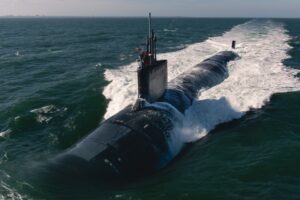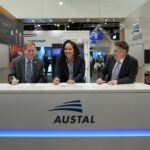
The Navy’s 30-year shipbuilding plan said the service plans to buy additional Virginia-class attack submarines (SSNs) to replace those to be sold to Australia under the AUKUS agreement. “The department recognizes the significant strategic opportunity presented by the Australia, United Kingdom, and United States (AUKUS) trilateral security pact to make a positive contribution to peace and stability in the Indo-Pacific region by enhancing deterrence. Based on the Tri-Lateral Agreement announcement of March 2023, the Navy anticipates building additional Virginia class…

 By
By 











